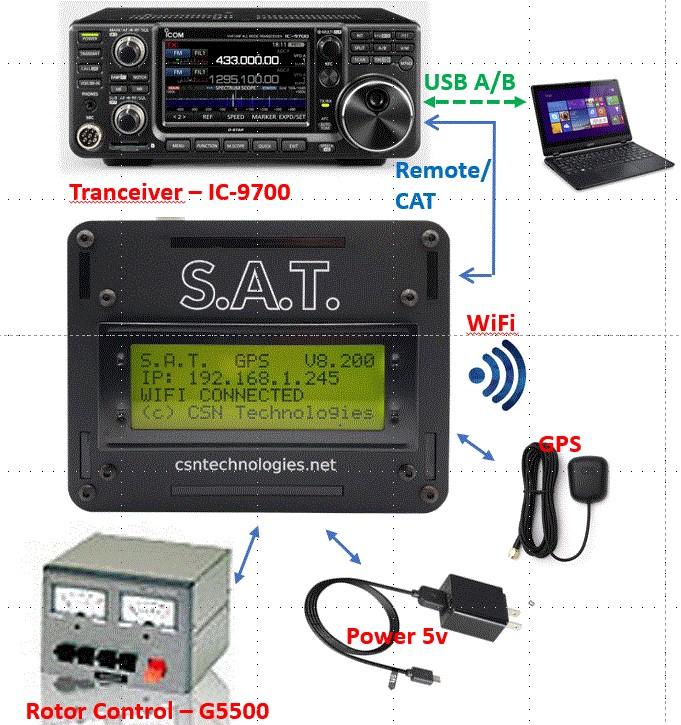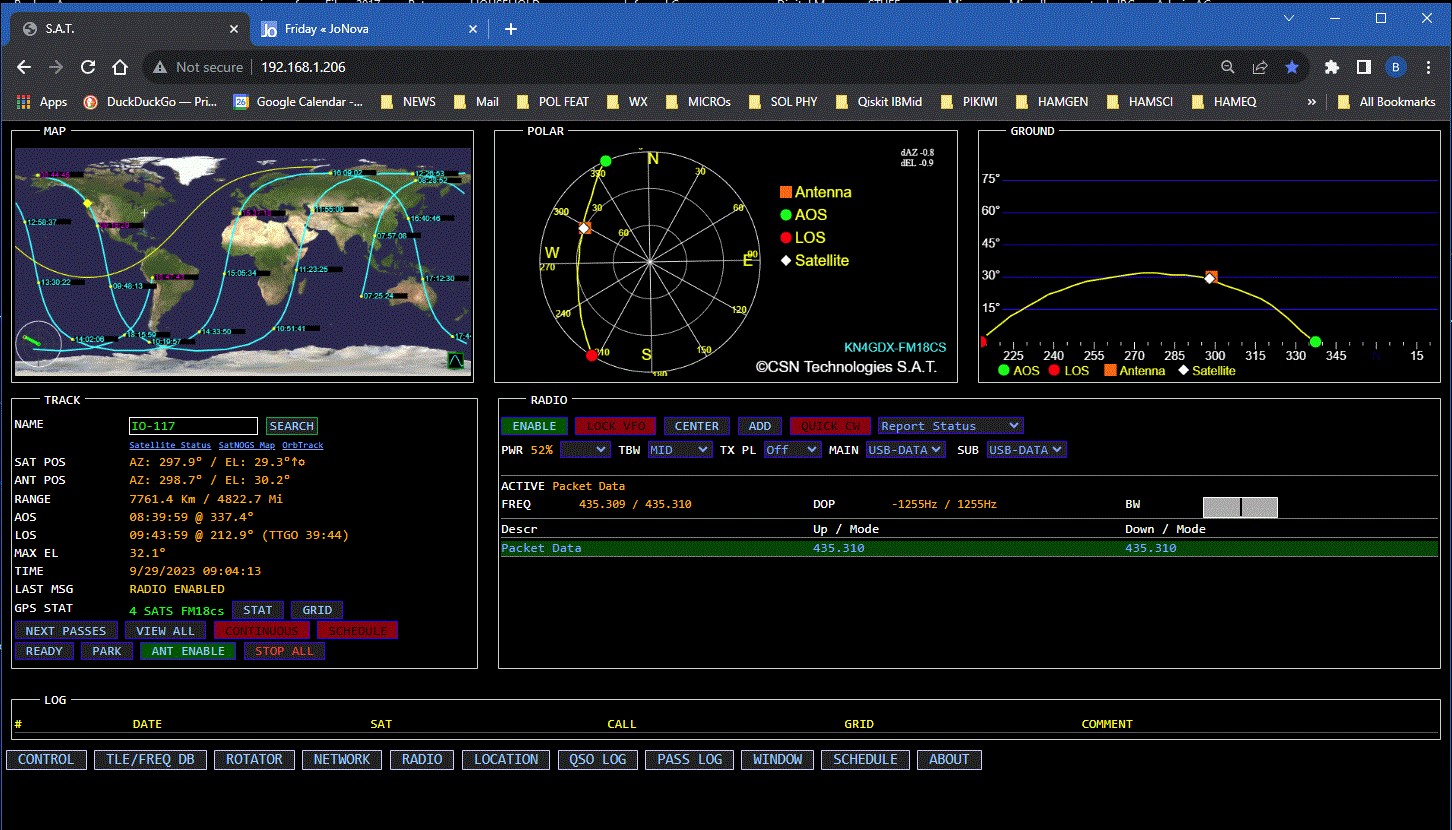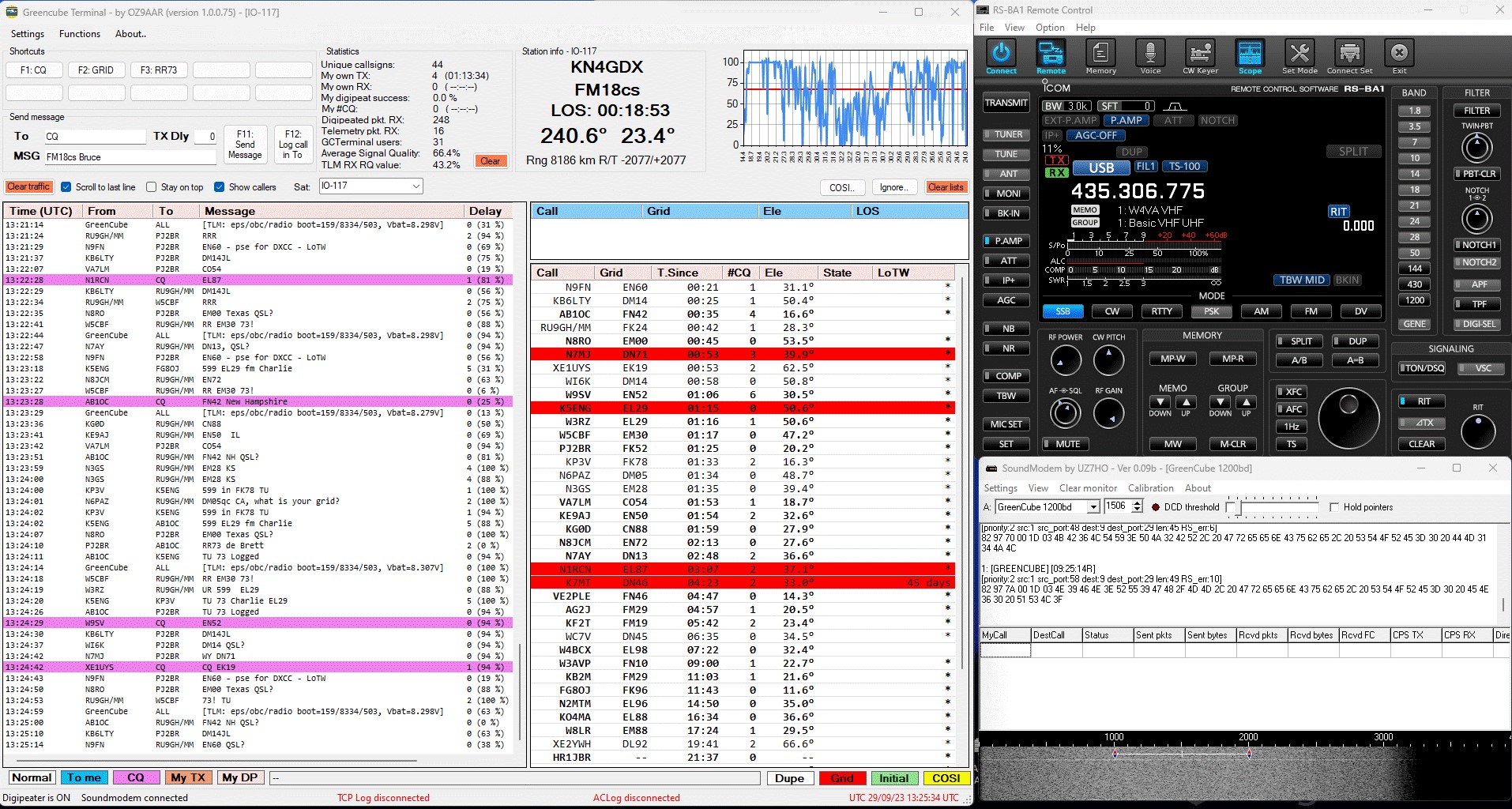
The amateur radio and amateur satellite hobby has been a popular and innovative niche for many years. When I started in amateur radio in the 1980s, packet was a very popular digital mode for terrestrial communications, with growing amateur satellite packet options. That continues today, but many hams are more familiar with packet use in popular applications such as APRS. Since then, there has been a large global deployment of digital-repeaters globally and especially in the US, supporting the packet digital hobby and increased satellite-packet options. Today, the terrestrial packet hobby coexists with other advanced forms of digital HF and VHF communications such as VARAC and Winlink. And short satellite packet contacts of several minutes have been normal. What has been missing in the US, are longer dwell satellite contact opportunities which are only possible through satellites deployed to higher altitude orbits.
Two recent developments………..
The amateur radio and amateur satellite hobby has been a popular and innovative niche for many years. Two recent developments have fueled additional ease of access for amateurs with popular transceivers, such as the IC-9700; and at the same time offering much longer contact times with a versatile packet-enabled satellite. These are the S.A.T. device and the recent Greencube amateur satellite, also known as IO-117. In the case of the S.A.T. device, WiFi access to the unit’s web-page-enabled controls provides ease of access to transceiver and rotor/antenna controls; while the IO-117 satellite provides trans-oceanic packet access at 1200 baud with ‘passes’ of 70+ minutes – plus a variety of user features.
Let’s take a closer look.

The S.A.T. Device
CSN Technologies (csntechnolgies.net) offers the Self-Contained Antenna Tracker for ~$275. I bought mine from DX Engineering which is a primary provider. This price is a little steeper than other rotor controllers but requires no tethering to a local computer. WiFi enablement of the S.A.T. web page offers all the features normally available with popular applications such as SatPC32; but without the local computer in the loop, and with less operator effort to update ephemeris files or satellite communications parameters.
(Editor’s Note: Ephemeris: – In astronomy and celestial navigation, an ephemeris is a book with tables that gives the trajectory of naturally occurring astronomical objects as well as artificial satellites in the sky.)
The S.A.T. is generally optimized for integration with the IC-9700 transceiver and Yaesu rotor controllers, but other solutions are possible. That combination was my existing setup; so, in my case, the choice was simple. Your applications may vary. The interfaces to the S.A.T. are
- 1) USB 5v power
- 2) GPS dongle (optional)
- 3) rotor interface and
- 4) transceiver remote access.
All cables are supplied. The important feature here is the transceiver’s USB computer interface is unused and that frees up the transceiver for interface with your local computer applications with both comm ports available. All recent Icom radios have the remote/CAT feature as a 3.5mm plug. Below is a screen shot of the S.A.T.’s web page and control console as accessed at my remote operating location.

In the case of remote operating, which has been my experience to date, my IC-9700 is accessed via the RS-BA1 software; and the S.A.T. is accessed via WiFi/Lan. So far, I have only done packet receive testing.
The Greencube/IO-117 Satellite
Western Hemisphere amateur satellite enthusiasts have been waiting for a very long time for reprise of long dwell orbit capabilities such as Highly Eccentric Orbit (HEO) or Geosynchronous Orbit (GEO) options. Eastern Hemisphere amateurs have been enjoying GEO access for a few years now via the QO-100 satellite.

Greencube was launched in 2022 by Sapienza University, Rome, through coordination with the Italian Space Agency and via a European Space Agency launch. The satellite is a ‘3U’ cubesat which translates to about 4 inches square by 12 inches long. It’s in a Medium Earth Orbit (MEO) with a period of about 4 hours and inclination of about 70 degrees. That means it is visible multiple times daily from anywhere on earth. Visibility times can be over 75 minutes and regularly feature access across the US – all 50 states – as well as Asian, European, and South/Central American contacts. Greencube also carries out other scientific missions such as biology experiments. Much more data is available here: https://stationproject.blog/2023/07/04/greencube-io-117-overview/
Here are some typical Greencube contact opportunities from the SatPC32 AOS program.
(Editor’s Note: What are AOS and LOS? – AOS (arrival of satellite, or acquisition of signal) and LOS (loss of satellite, loss of signal) are defined respectively as the time when the satellite arrives over the horizon, and when the satellite passes below the horizon.)
WinAos QTH: -77.8/38.8 T#: 16706 Sat.: 1 [Standard]
—————————————————————————-
Day Objects AOS (L) LOS Period maxEl AZ
—————————————————————————-
28.09.2023 IO-117 02:20 03:35 75 37 303 – 104
28.09.2023 IO-117 06:24 07:39 75 78 334 – 172
28.09.2023 IO-117 10:22 11:06 44 10 333 – 251
28.09.2023 IO-117 16:44 17:39 55 20 129 – 023
28.09.2023 IO-117 20:20 21:36 76 84 200 – 029
My tracking antennas are more modest (‘Leo Pack’) than those in the IO-117 overview link but work fine for copying the UHF packet traffic; and some operators have reported success with fixed antennas such as ‘eggbeaters’.
Greencube Software
Various software options are available. I have been using the Greencube Terminal program which works in concert with the popular Soundmodem software. The Soundmodem option required is the SSB version. Yes, Greencube transmits Upper Side Band on the 440 MHz band. Extensive detail on downloading and using these free software options are available at: https://www.moonbounce.dk/hamradio/greencube-terminal-program.html
Join in the fun! In time other groups are likely to launch amateur long-dwell satellites. See, for example, AMSAT/GOLF which is a “Greater Orbit, Larger Footprint” project.
This is an example Greensat packet capture from Soundmodem.
1: [GREENCUBE] [20:30:51R]
[priority:2 src:1 src_port:34 dest:9 dest_port:29 len:59 RS_err:4]
82 97 62 00 1D 03 59 56 35 4E 45 41 3E 4B 4A 37 53 58 52 2C 20 47 72 65 65 6E 43 75 62 65 2C 20 53 54 4F 52 45 3D 30 20 37 33 20 64 78 20 54 6E 78 20 51 73 6F 2E 20 4C 4F 54 57
And here are examples of decoded user packets from the Greencube Terminal program.
18.04.23 14:42:41.122 G0IIQ CQ IO93VN RX:0
18.04.23 14:42:42.181 K0EKL M5JFS 59 EN37 QSL? RX:0
18.04.23 14:42:49.404 K9JKM M5JFS 599 EN52 Illinois RX:2
18.04.23 14:42:50.422 GW0POA CQ IO81KM RX:0
18.04.23 14:42:58.692 KI0KB GW0POA UR 599 DN70 Colorado QSL? RX:0
18.04.23 14:43:03.431 K0EKL GW0POA 59 EN37 QSL? RX:0
…
18.04.23 14:44:07.534 DJ7ZZ CQ CQ JO30WK RX:0
18.04.23 14:44:14.136 KC9ELU 4A9O 599 EM79 INDIANA RX:0
18.04.23 14:44:17.085 VA7LM M5JFS CO54qb RX:0
18.04.23 14:44:23.526 G3OUA 4A9O 599 IO90tu QSL? RX:1
….
18.04.23 14:46:06.171 4A9O OZ9AAR R DL80 LGD 73 RX:0
18.04.23 14:46:08.271 N8RO GW0POA EM00 Texas QSL? RX:1
18.04.23 14:46:12.101 OZ9AAR 4A9O R 73 LoTW RX:0
The screenshot below shows the Greencube Terminal program and a remote access configuration using the IC-9700 in RS-BA1 configuration. The Soundmodem decoding is on the lower right side of the screen. The blue trace on the upper right side of the terminal program shows the packet decoding quality as a function of the satellite local elevation during the pass.

For additional information, please contact Bruce, KN4GDX.
73
EDITOR’S NOTE: This article is just a foretaste of Bruce, KN4GDX’s November Monthly Meeting presentation. He will go into greater detail and will be willing to answer questions.
A big thank you to Bruce, KN4GDX whose article arrived by e-mail.
If you have a article you’d like to share, please send them to me or someone on the web committee.
KB
